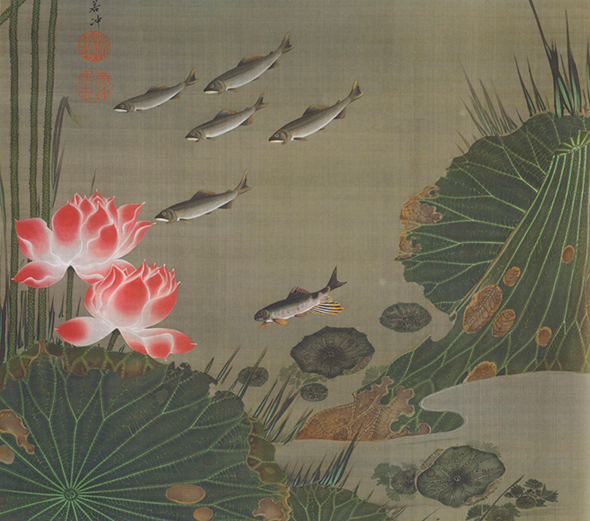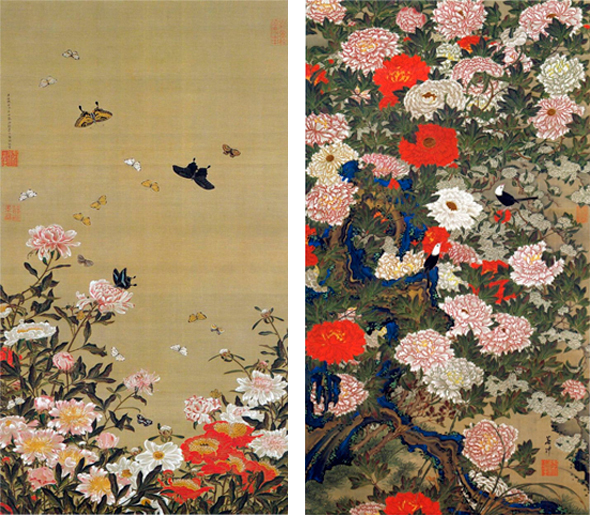

Itō Jakuchū (1716-1800) is considered one of Kyoto's finest professional painters of the Edo period. He is remembered for his reserved personality and his capricious approach to painting. Born to wealthy merchant parents, Jakuchū lived a comfortable and carefree life, allowing him to dedicate himself entirely to his art.
His artistic training likely included masters of the Kano school, painters in the service of the emperor's government. He also studied with Zen monks in Kyoto. Some of his most important compositions were gifts or commissions from temples and monasteries, reflecting the strong influence of Buddhism on him. Later, after his fortunes declined, he retired to a monastery, and although he never became a monk, he devoted himself to exploring his art within its walls. He even received the Buddhist title of koji for his adherence to Zen ideals.
However, Itō Jakuchū was an eccentric individual, and his personality is reflected in his works. At his home in Kyoto, he collected exotic birds, some of which he used as models for his paintings. Much of his work stems from his own careful observations, which led him to create a unique and unusual style, drawing on classical Chinese landscapes and archetypal figures he studied with monks. He also incorporated bright and decorative colors, setting him apart from Chinese and Buddhist aesthetic precepts, as well as from other painting apprentices.
Jakuchū experimented with different themes and styles. His human figures are frequently depicted in a comical manner. His nature paintings, on the other hand, reflect a very precise, though sometimes exaggerated, realism. Itō Jakuchū even managed to access foreign works that were limited at the time during a period of Japanese isolation. In some paintings, he even used dyes that he smuggled into the country.



0 comments